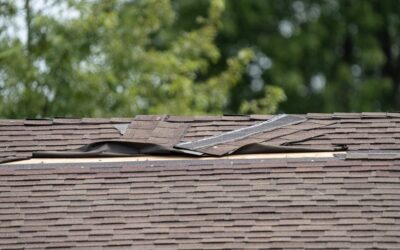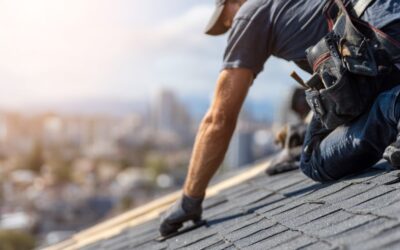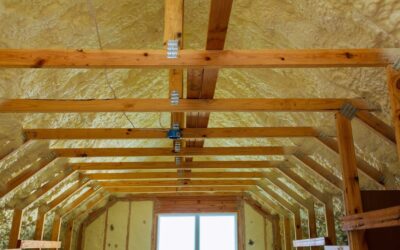Roof Coating for Shingles: Protect, Extend, and Transform Your Roof
Your roof is one of the most critical components of your home. It protects your family, your belongings, and the structure itself from the elements—rain, snow, wind, and sun. Over time, shingles can deteriorate due to exposure to harsh weather, UV rays, and natural aging. While replacing an entire shingle roof can be expensive, there’s a cost-effective alternative that homeowners are increasingly turning to: roof coating for shingles.
In this comprehensive guide, we’ll explore everything you need to know about roof coatings for shingle roofs, including benefits, types, application methods, costs, maintenance tips, and how to choose the best contractor for the job.

What Is Roof Coating for Shingles?
Roof coating for shingles is a protective layer applied over an existing asphalt shingle roof to enhance durability, reflect sunlight, and prevent water penetration. These coatings are typically made of acrylic, silicone, or elastomeric materials designed to adhere to shingle surfaces while creating a waterproof, reflective, and long-lasting barrier.
Unlike roof replacement, which involves tearing off the old shingles and installing new ones, a roof coating preserves your existing shingles while extending their lifespan. This makes it an attractive option for homeowners looking for cost-effective roof protection.
Benefits of Roof Coating for Shingles
Applying a high-quality roof coating to your shingles offers numerous advantages:
1. Extends Roof Lifespan
Shingle roofs generally last 20–25 years. A roof coating can add 5–15 years to the life of your shingles by protecting them from UV damage, cracking, and water infiltration.
2. Waterproof Protection
Roof coatings form a continuous waterproof layer over shingles, reducing leaks and water damage. This is especially valuable for older roofs with minor wear or granule loss.
3. Energy Efficiency
Reflective roof coatings can lower your home’s energy costs by reflecting sunlight and reducing heat absorption. Homes with coated shingle roofs stay cooler in summer, reducing air conditioning costs.
4. Cost Savings
Compared to full roof replacement, coating your shingles is significantly more affordable while still providing substantial protection.
5. Environmentally Friendly
Roof coatings reduce waste by extending the life of your existing shingles, preventing them from ending up in landfills prematurely.
6. Enhances Appearance
Roof coatings can revitalize the look of your shingles, giving your roof a fresh, uniform appearance. Some coatings are available in various colors to match your home’s exterior.
Types of Roof Coatings for Shingles
Several types of coatings are suitable for asphalt shingle roofs. The best choice depends on your goals—whether it’s durability, reflectivity, or waterproofing.
1. Acrylic Roof Coatings
Acrylic coatings are water-based and widely used for shingle roofs. Key benefits include:
- Excellent UV resistance
- Easy application and cleanup
- Cost-effective
- Good flexibility for minor roof movement
Acrylic coatings work best in areas with moderate rainfall and are ideal for homeowners seeking a long-lasting, reflective finish.
2. Silicone Roof Coatings
Silicone coatings provide superior waterproofing and UV resistance. Key features include:
- Excellent ponding water resistance
- Long-lasting, often 10–20 years
- Flexible and resistant to cracking
- Ideal for regions with heavy rain or standing water
Silicone coatings are more expensive than acrylic but offer exceptional protection against leaks and water damage.
3. Elastomeric Roof Coatings
Elastomeric coatings are thick, flexible coatings that expand and contract with your roof. Key benefits include:
- Superior crack and blister resistance
- Reflective properties for energy efficiency
- Durable and long-lasting
- Suitable for roofs with minor surface damage
Elastomeric coatings are versatile, providing both waterproofing and enhanced energy efficiency for shingle roofs.
4. Asphalt-Based Roof Coatings
Asphalt-based coatings are formulated from modified asphalt and work well on older roofs. Benefits include:
- Adds a protective layer to worn shingles
- Provides waterproofing and UV resistance
- Cost-effective for minor repairs and maintenance
While asphalt-based coatings are effective, they tend to have a shorter lifespan than acrylic, silicone, or elastomeric coatings.
How Roof Coatings Work
Roof coatings work by creating a protective barrier over your shingles. Here’s a breakdown of how they function:
- Seals Cracks and Gaps: Coatings fill small cracks, granule loss areas, and minor imperfections.
- Reflects UV Rays: Reflective coatings prevent the shingles from absorbing excessive heat, reducing thermal stress.
- Waterproofs the Roof Surface: Coatings form a continuous membrane, preventing water infiltration.
- Improves Flexibility: High-quality coatings allow your shingles to expand and contract with temperature changes without cracking.
Essentially, roof coatings act like sunscreen for your shingles—protecting them from the sun, rain, and wear while preserving their structural integrity.
Signs Your Shingle Roof Needs a Coating
Not every roof needs a coating, but certain signs indicate your shingles could benefit from this protective treatment:
- Fading or Granule Loss: Shingles losing granules or color indicate aging and UV damage.
- Minor Leaks or Water Stains: Roof coating can prevent leaks from spreading and causing damage.
- Cracked or Curling Shingles: Coatings help seal minor cracks and slow further deterioration.
- Aging Roof: Homes with roofs around 10–15 years old may benefit from coating to extend life.
- High Energy Bills: Reflective coatings can help reduce heat absorption and lower cooling costs.
If your roof shows any of these signs, applying a roof coating can save money compared to early replacement.
Roof Coating Application Process
Applying a roof coating for shingles requires careful preparation and professional expertise. Here’s what the process typically involves:
1. Roof Inspection
A licensed roofing contractor inspects the shingles to identify damage, leaks, and areas requiring repair before coating.
2. Cleaning the Roof
The roof is cleaned to remove dirt, debris, moss, and mildew. Proper cleaning ensures the coating adheres correctly to the shingles.
3. Repairing Damaged Areas
Any cracked, loose, or missing shingles are repaired or replaced to create a smooth surface.
4. Priming (if necessary)
Some coatings require a primer to improve adhesion, especially for older or weathered shingles.
5. Applying the Coating
The coating is applied using a brush, roller, or spray system, usually in multiple layers. Each layer is allowed to dry before the next application.
6. Final Inspection
After application, the contractor inspects the roof to ensure even coverage, proper adhesion, and full protection.
Professional application is crucial, as improper coating can lead to peeling, cracking, or water infiltration.
Roof Coating for Shingles Cost
The cost of coating a shingle roof varies based on roof size, type of coating, and labor. Here are some average estimates:
| Coating Type | Cost per Square Foot | Lifespan |
|---|---|---|
| Acrylic | $1.50–$3.50 | 5–10 years |
| Silicone | $2.50–$5.50 | 10–20 years |
| Elastomeric | $2.00–$4.50 | 10–15 years |
| Asphalt-Based | $1.25–$3.00 | 3–7 years |
Factors influencing cost include:
- Roof accessibility and pitch
- Number of coats applied
- Repairs required before coating
- Geographic location and labor rates
While roof coating is an investment, it is significantly cheaper than a full roof replacement and provides substantial protection for your shingles.
Maintenance Tips for Coated Shingle Roofs
To maximize the lifespan of a roof coating, homeowners should follow these maintenance tips:
- Regular Inspections: Inspect your roof twice a year and after major storms.
- Clean the Roof: Remove debris, leaves, and moss that can trap moisture.
- Check Coating Condition: Look for peeling, cracking, or discoloration and address issues promptly.
- Maintain Gutters: Ensure proper drainage to prevent water pooling on the roof.
- Avoid Foot Traffic: Minimize walking on the coated roof to prevent damage.
- Reapply Coating as Needed: Most coatings last 5–15 years; schedule reapplication when performance declines.
Regular maintenance ensures your shingles remain protected and prolongs the effectiveness of your roof coating.
Choosing the Right Contractor for Roof Coating
Selecting a professional roofing contractor is critical to ensure proper application and lasting results. Consider these factors:
1. Experience and Expertise
Choose a contractor experienced in shingle roof coatings, with a proven track record and positive reviews.
2. Licensed and Insured
Verify the contractor is licensed and insured to protect your home and investment.
3. References and Reviews
Check testimonials, online reviews, and request references from past customers.
4. Warranties
Reputable contractors offer warranties on labor and materials to guarantee quality.
5. Transparent Pricing
Request detailed estimates that include prep work, coating, labor, and any additional costs.
Roof Coating vs. Roof Replacement
Many homeowners wonder whether to coat or replace their shingle roof. Here’s a comparison:
| Feature | Roof Coating | Roof Replacement |
|---|---|---|
| Cost | Lower | Higher |
| Lifespan Extension | 5–15 years |
 (440) 307-2060
(440) 307-2060




